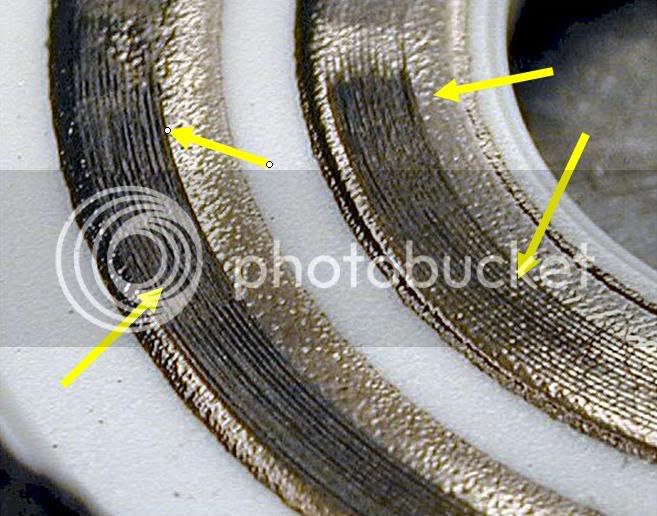QUOTE
I have had my TPS replaced under the recall by my local dealer, bike now runs worse than it did before!
I have been into the TPS Diag screen as suggested to check the readings and mine are 15-99.
Bike has inconsistent idle when warm, and sounds horrible when coming of first part of cold.
I have been back to dealer to ask him to check it out and all he says is "it's fine"!!!
Any advice / help would be gratefully recieved
[Pre-Edit -- FU Photobucket, to view the photos you will need to install one of these addons Firefox fix Chrome fix ]
There has been a lot of posting traffic about drivability issues after a TPS replacement. My own FJR is one of the bikes that ran worse after a TPS replacement. So far my FJR is the only one I’ve had a chance to diagnose to find the root cause for the poor drivability after the TPS change. I can’t draw any complete conclusions based on a sample of one. What follows is another chapter in the ongoing saga of the TPS.
The TPS is a simple device, what is referred to as a ‘passive’ component. You can see a post mortem and anatomy of a TPS
here. The TPS is simply a resistor with a brush that runs along the resistor. The ECU puts a +5VDC reference voltage on one end and ground on the other. As the throttle is twisted the brush runs along the resistor and sends a voltage to the ECU that is proportional to how far the throttle is turned. At idle it sends the ECU ~750mV and at full throttle is sends ~4.75VDC. The TPS failures have been due to the resistor wearing out over time. So far as I know, there have been no TPS failures right out of the box and no sudden, catastrophic failures.
The arrows point to the locations where this TPS resistor material is burned and worn through:
Our TPS P/N is also used on the R1, FZ6, and the Warrior which were all included in the TPS recall. None of the other Yamaha forums have reported the kind of post TPS replacement problems that the FJRs have had. In conjunction with the TPS recall some bikes like the FZ6 and R1 have had the ECU replaced and there were a bunch of
ignition switches replaced. As the replacement TPS’s are the same P/N as the FJR replacement sensor I would have expected to see the same problems in proportion to the FJR issues if the replacement TPS had issues.
Some of the ways that the TPS can be a problem after replacement are:
- Bad out of the box, the likelihood is low (diAG testable)
- The shop put an old P/N TPS back in by error (stupidity, or not reading the recall notice closely)
- Some shops have done a TBS (poorly) after the TPS replacement even though a TBS is not necessary or called for after the TPS replacement
- Botched replacement, while hard to screw up the replacement, some shops may have been up to it
- There is an old seal that needs to be removed from the throttle plate pivot shaft
- The new seal needs to be seated properly; seal problems will lead to vacuum leaks
- The shop should be able to remove the TPS directly but some shops have been known to remove the FI rail to gain better access
- If the FI rail is removed there are a number of things that can go wrong
- The TPS may be incorrectly calibrated, can happen, but it would have to be really wrong to create drivability problems (diAG testable)
- Connector wires may have been damaged, low likelihood but not nonexistent (diAG testable)
- ECU TPS feedback channel may have been electrically damaged, low likelihood but not nonexistent (diAG testable)
- There may have been preexisting problems that were masked by degraded TPS performance, in my opinion this probably accounts for the majority of posted TPS woes
My TPS was in the dire failure mode when I replaced it, well in advance of Yamaha announcing a recall. My TPS had worn out in the idle location and again around 3k rpm where I spend most of my cruising time. My TPS only failed when hot. I had problems with my idle speed being too low, and some times stalling when pulling away from a stop. At first I couldn’t understand how I could stall my FJR, whatta rookie error. Worse is when I would stall in city traffic where it was downright life threatening. Then my wife started complaining about my rough throttle control while cruising. This is when I started to put it all together. After changing my TPS the main failure symptoms at idle and cruising went away.
I didn’t recall that my bike ran poorly before the TPS problems showed up. Almost immediately after the TPS change I noticed that my surging was back in a major way, in spite of my PCIII. My idle speed also wavered; the idle was a bit rough and strangely, it sounded like a diesel engine. After some extensive troubleshooting the problem turned out to be a bad plug cap connection to the #3 plug. After fixing the plug problem my FJR has run the best it has in a long time.







